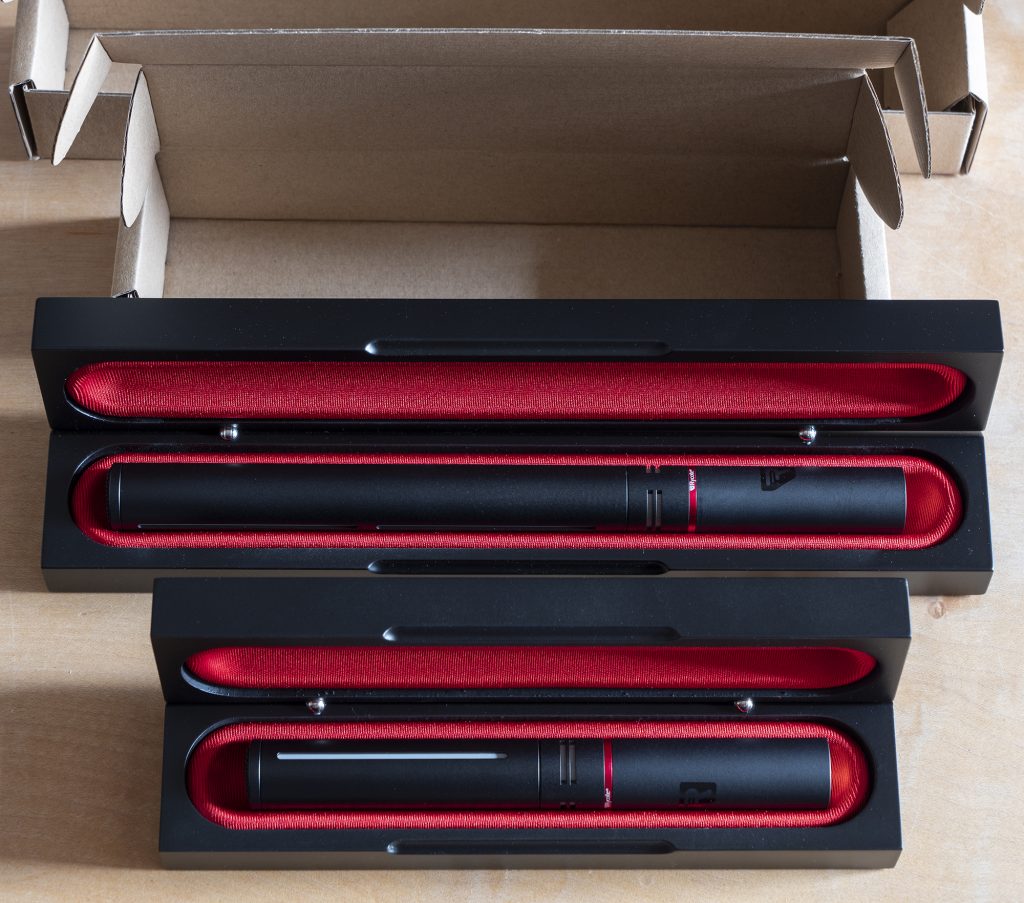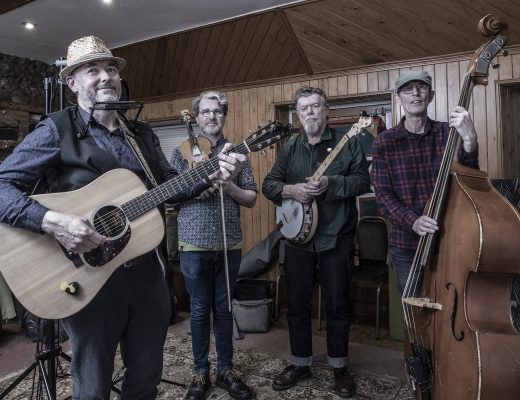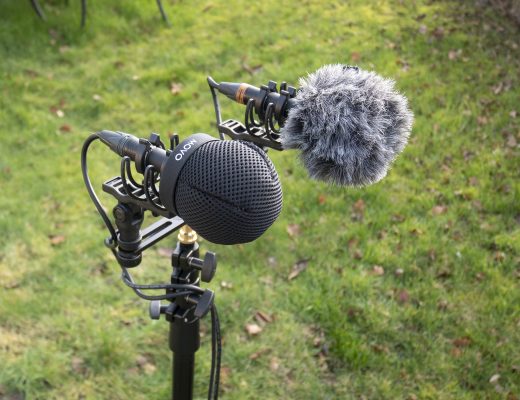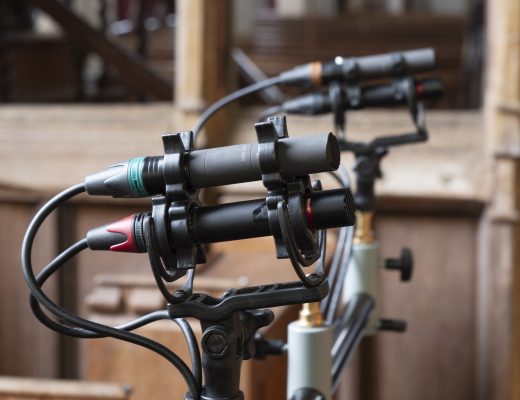
New microphone manufacturers appear from time-to-time, but when I heard that Rycote – with over 50 years of well-respected design and manufacturing of microphone windshields and suspensions – were producing their first microphones, this stood out as something rather different: both their reputation and experience with other mics suggested that this could be an intriguing addition to the market. Given Rycote’s long involvement with broadcast and film sound, it isn’t that surprising that the two mics are both shotguns: one 15cm long and the other 22cm, giving rise to the HC-15 and HC-22 names. The specs fueled my initial interest as did the fact that they are made entirely in the UK at Rycote’s factory in Stroud. The price is interesting too, with the HC-15 costing £560 and the HC-22 £575 (ex VAT). This places the mics in slightly underpopulated territory, well above the list prices for the Rode NTG5 and NTG3, but well below the list price of the Sanken CS1-E or, say, the Audio Technica BP4073. Many staples of location sound recordists – such as the various shotgun mics made by Sennheiser, Schoeps and DPA – are more costly still. So, intrigued by all this and knowing Rycote to be a friendly and approachable company (see, for example, their help with my oversized LDC mic windshield), I asked whether they would let me review and test the mics: a few email exchanges later, and the mics arrived last week – no conditions/obligations applied nor, indeed, any timescale for their return! They included some foamies and a Classic Softie kit, with a Nano Shield (out of stock) on its way soon.
The approach
I don’t know about you, but I’m not overly excited by mic reviews – usually vlogs – that involve unboxing and reiteration of the published specs, in this case readily available online on the Rycote website, along with some tests of the mics in an unlikely location (e.g. with shotgun mics locked off above a vlogger’s head in their indoor studio). Of course, there is a value in comparative tests of mics, despite the danger (for shotgun mics) of these ending up being grouped in static arrays, but the number of professional shotguns available means that this is outside the scope of what I can do: for the nuances of Mic A vs Mic B there is no substitute for testing and working with both mics yourself and no review or on-line test is going to replace that. Rather, the focus of this review is a series of more real-world tests with the two Rycote mics, some out and about on location, with the aim to see if the Rycote mics are contenders for serious use. Sometimes I use another mic for the purpose of comparison, or to illustrate a point, and mostly I use the HC-15 and HC-22 together – which at least helps clarify the differences between the two. Sometimes I use the HC-15 and HC-22 in combination with a fig 8, to see how they stand up is the mid mic in a mid-side stereo pair: common use for a shotgun mic. But you won’t find any tests of the mics mounted on a camera: I’ve yet to find a need for this, and my gut feeling for such use is the compromised positioning means a more modest shotgun (and perhaps one without P48) will do the job.
Rabbit rabbit
With dialogue or speech recording being key uses for a shotgun mic, I was keen to put the Rycote mics through their paces on voices. There are many different aspects to this, but the ones I was keen to test were overall sound (Rycote describe their mics as ‘precise’ and as having ‘a crisp sound with some additional warmth’) and off-axis response (how coloured is the sound off-axis?).
For this test, I went to a small local theatre (the Sheringham Little Theatre) to use its stage: not a huge sound-treated stage, but a step up from a village hall, and did some tests with the writer (Chris Sainton-Clark) reading excerpts from his one-act play ‘My Other Half’ statically (with the mic on and off axis), and moving about (to see how susceptible the mics are to comb filtering in such a less than ideal interior space). To make it easier to follow the various positions, I have put this test into a video. Oh, and, yes, I know the 180 degrees off-axis test is fairly mad!
Putting the shotgun mics into tougher conditions, I then dragged Chris onto the pavement outside the theatre to ad lib as if for an interview (quite fairly, he chose to promote the theatre where he works!) against the backdrop of the entrance (which houses a bustling café), with noisy traffic and people behind the mic on a busy junction at the centre of the town:
Play it again, Luke
Rarely is a shotgun mic much use in a music studio or, even, for remote location recording of music (e.g. in a church or concert hall), but sometimes the polar pattern of a shotgun mic is necessary. Recording music is also a good test of any mic, so to put the Rycote’s mics to this use I chose to record a guitarist in an indoor non-studio space (a woodcarver’s workshop).
Here are the two mics used to record ‘Moth to a Flame’, written and performed by Luke Chapman. I’ve also included a third version, with the HC-22 paired with an AKG CK94 (i.e. SDC fig 8 mic) to show how the Rycote mics perform as the mid mic and a mid-side stereo pair. The sound is just as it came off the mics, recorded into a Sound Devices MixPre-3.
And here is a short video with clips of Luke Chapman playing the guitar and singing, with the sound (as shown on the screen) switching from HC-15 to HC-22 to HC-22+AKG CK94 mid-side. Again, there is no editing or effects. The limitations of using a single shotgun (even if in one version, combined with a fig 8 side mic) for recording both guitar and vocals simultaneously are evident, and not something I would normally do (in fact, I’m currently recording an album with Luke using three fig 8 LDC mics), but it worked rather better than I thought. And, of course, sometimes a shotgun mic (or shotgun-based mid-side pair) might be an effective solution: e.g. a run-and-gun recording of a busker in a noisy street.
Let’s get physical
While the sound of the mics is the focus of this review, another aspect not clear from the specs is the physical nature of the mic. That is the build quality (insofar that this is clear without dismantling it and using it for years in all conditions), the handling noise (shotguns are forever on the move, at the end of boom poles or on pistol grips), and susceptibility to wind noise.
Build quality seems excellent. With no high-pass filter or pad switches, there are no moving parts to assess, so it’s a simple design. The mix of materials is unusual feeling, but not in a bad way. The brass barrel of the pre-amp (as opposed to the aluminium of the capsule section and interference tube) has a bit of heft (though these are light mics at 90g and 100g): this takes the centre of gravity of the HC-15 a little back from the red ring, and with the HC-22 it is around the paired slots behind the diaphragm. Access to the innards is evidently by release of the brass circlip in the XLR socket, which seems preferable to a screw (the circlip also grounds the mic body to pin 1): I didn’t open up the mics though…The wooden cases are classy, well made and close in a satisfying way (simple pleasures!): not sure many would use them in the field though. More attractive is the lack of gubbins with the mics: no additional equipment means you aren’t paying for things you so often don’t need.


Testing for handling noise transmitted via a boompole required some deliberately bad booming aiming for maximum transmission of vibration to the mics (on an Invision 7 suspension). Unsurprisingly the two Rycote mics are pretty similar, with all the unwanted noise below 50Hz (and therefore addressable by a low-cut filter, if not, of course, by better technique). By way of comparison, here are test files for the HC-15, the Oktava MK012 with the hypercardioid capsule, and the AKG CK93 (hypercardioid), which reveal no major differences:
Wind noise on a mic varies with polar pattern, of course, and, while wind protection from a slip-on foam cover, through softies to a full blimp can address the issue, it is good to examine the baseline susceptibility. For this – not least given relevance to actual use – I have just gone for some simple fast boompole swings, with the mics mounted together. The HC-15 and HC-22 are not that different, with the HC-22 (reflecting better rejection of the sides) performing better than the smaller shotgun:
The susceptibility to wind appears pretty normal for a shotgun mic and even lower-cost versions perform well. Here for example, is the HC-22 compared to the Rode NTG1 (levels adjusted to reflect sensitivity), with the latter a bit quieter:
But comparing the Rycote shotguns to other types of boompole mics – in this case hypercardioids – shows a significant difference: even the more wind-susceptible HC-15 easily outperforms the AKG CK93 and, by a huge margin, the Oktava MK012:
Silence is golden
Of the specs the one that immediately stood out to me was the 8.5 dBA (+/- 2 dB) self-noise. This is about as low as it gets for a shotgun mic (think Sennheiser MKH 60 at 8dBA) and is much better than most of the professionals’ favourites. Diaphragm size is a significant factor in mic self-noise, and, while the size isn’t published, Rycote have told me that a 17mm-diameter diaphragm has been used (not bad in a 19mm-diameter mic body). Of course, not all mic manufacturers measure self-noise in the same manner nor is all self-noise the same, so my first test with the mics was to record nothing. Well, as near nothing as possible outside an anechoic chamber or a nuclear bunker: in the hallway of my house in a rural village, I closed all doors, turned off the mains electricity at the consumer unit, and left the two mics recording into a Sound Devices MixPre-3 (EIN -130dBV/-128dBu) along with a Rode NT2-A (at 7dBA in the same ball park). Self-noise was indistinguishable between all three mics. There’s not a lot of value to uploading WAV files showing the slight hiss with gain cranked up wildly, simply to confirm the published spec, but listening to the boompole handling-noise sound samples above makes clear the difference between the Rycote mics and mics with higher self-noise (the AKG CK93 self-noise is 17dBA and the Oktava MK012 self-noise is 18dBA).
Final thoughts
These tests are neither exhaustive nor especially technical: no anechoic chambers or such like were involved. Nor do they rigorously compare the HC-22 and HC-15 to a whole range of other shotgun mics. But the process of carrying out the tests has shown me that Rycote’s first foray into mic design has huge merit: these mics thoroughly deserve to be considered as alternatives to familiar mics above and, indeed, below their price point. The low self-noise and healthy output makes the mics obvious contenders for nature and effects recording; the same attributes, low weight and good off-axis sound make them contenders for film and TV sound; and the same specs/construction for the two models with different interference tube lengths mean that they are ideal if you want to swap seamlessly from one type of shotgun to the other. Having got my hands on them, I certainly don’t want to send them back to Rycote!




9 Comments
I have been waiting to see a review of these new mics. As best as I can tell, yours is the first online review of these new mics, Roland. Well done. I’m impressed with how quiet they are and the sound quality is very good. Thanks for the great review and all the sound samples. I think Rycote is going to rock a number of high-end microphone manufacturers back on their heels. Great quality at a great price point.
Thanks, Todd. They certainly have impressed me: I’ll be interested to hear – in due course – how others with more experience (and a raft of top-end shotgun mics) rate them. I know George Vlad has been testing them from a nature-recording perspective.
Quite an effective test Roland. I think the H15 with mid side seems to be a good overall sound for Stereo. Certainly off axis colouration is very low.
Thanks Jake. In the posted examples it was actually the HC-22 (i.e. the longer shotgun) with the AKG CK94 fig 8 for MS, but either Rycote mic works well in this combination for stereo.
[…] on from my initial tests and review of the Rycote’s first mics – the HC-15 and HC-22 shotgun mics – this shorter post adds some tests of ambience […]
[…] I said in my original review and tests of Rycote’s new shotgun mics pricewise they sit in rather unpopulated territory, above the equivalent mics made by, say Rode, […]
Hello Roland,
Thanks a ton for this review. I like the what I heard. I am happy that you included outdoor samples. When it is available in my country, I won’t mind having one.
Hello Sabyasachi,
Thanks for the kind words. Not sure how soon the mics will become available in India: you could always contact Rycote as they are a friendly bunch!
Cheers,
Roland
[…] to part one, these mics are a great follow-up to the HC-15 and HC-22 shotgun mics (for which see my initial review and subsequent field recording tests). All five mics merit consideration by anyone planning to buy […]